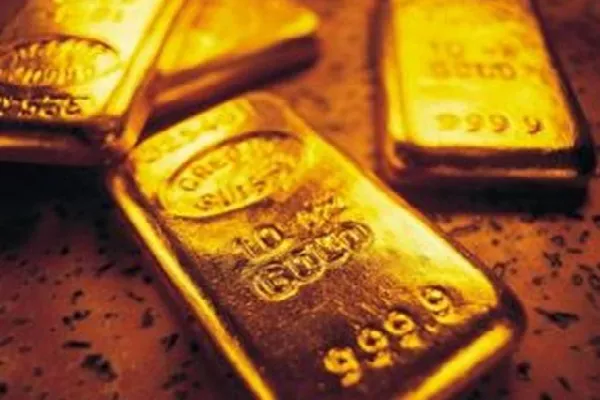Gold, often referred to as the “king of metals,” has captivated human civilization for millennia due to its intrinsic beauty and enduring value. Unlike many other commodities, the value of gold transcends the fluctuations of financial markets and economic uncertainties. Understanding how gold value is determined is crucial for investors, central banks, and anyone interested in the world of finance and precious metals. This article explores the multifaceted mechanisms that influence and determine the value of gold, shedding light on the key factors that drive its price in today’s global markets.
The Historical Significance of Gold
Gold has been a symbol of wealth and prosperity for thousands of years. Its role in human history dates back to ancient civilizations, where it was used as currency, jewelry, and even in religious rituals. The unique properties of gold, such as its malleability, durability, and rarity, have consistently made it a coveted asset. These historical foundations continue to underpin gold’s role as a store of value and a safe haven asset in the modern world.
Market Supply and Demand
At its core, the value of gold is influenced by the basic economic principle of supply and demand. The interplay between these two factors shapes the price of gold in the global market.
Supply Factors:
a. Mining Production: The majority of the world’s gold supply comes from mining operations. Annual gold production from mines is a critical factor influencing supply. Fluctuations in production levels due to factors like declining ore grades, geopolitical instability in mining regions, and operational challenges can impact the supply of gold.
b. Scrap Gold: Another source of gold supply comes from recycled or scrap gold. This includes old jewelry, electronics, and other items containing gold. Economic conditions and the price of gold can influence the amount of scrap gold entering the market.
Demand Factors:
a. Jewelry: The largest demand for gold globally is in the jewelry industry. Cultural preferences, economic conditions, and fashion trends play a significant role in determining the demand for gold jewelry.
b. Investment: Investment demand for gold includes purchases of gold bars, coins, and exchange-traded funds (ETFs). Investors turn to gold as a hedge against inflation, currency devaluation, and economic uncertainties. The level of investment demand can surge during times of financial turmoil.
c. Central Banks: Central banks are major players in the gold market. They hold significant gold reserves as part of their foreign exchange reserves. Central banks’ decisions to buy or sell gold can have a substantial impact on the market.
d. Industrial Uses: Gold is utilized in various industrial applications, including electronics and dentistry. The demand from these sectors is influenced by technological advancements and economic conditions.
Geopolitical and Economic Factors
Geopolitical events and economic conditions can have a profound impact on the value of gold. Gold often serves as a safe haven asset during times of geopolitical turmoil or economic instability. Investors tend to flock to gold as a store of value when they perceive increased risks in other asset classes.
For example, during the global financial crisis of 2008, the price of gold surged as investors sought refuge from the uncertainty in financial markets. Similarly, geopolitical tensions, trade disputes, and economic recessions can trigger increased demand for gold, driving its price higher.
Currency Movements
Gold is priced in U.S. dollars on international markets. As a result, fluctuations in currency exchange rates can directly influence the value of gold. When the U.S. dollar strengthens against other currencies, the price of gold typically declines, as it becomes more expensive for buyers using other currencies. Conversely, a weaker U.S. dollar can lead to higher gold prices.
Interest Rates and Inflation
Interest rates and inflation are significant drivers of gold prices. When interest rates are low or negative, the opportunity cost of holding gold decreases, making it a more attractive investment. Low interest rates also tend to weaken the value of fiat currencies, further boosting gold’s appeal.
Inflation erodes the purchasing power of currency, making tangible assets like gold an appealing store of value. Investors often turn to gold as a hedge against rising inflation expectations, which can drive up demand and prices.
Speculation and Market Sentiment
Market sentiment and speculative activity can cause short-term price fluctuations in the gold market. Traders and investors often react to news, rumors, and technical analysis, leading to rapid price movements. Speculative buying or selling can exacerbate price volatility.
In recent years, the proliferation of financial instruments like gold ETFs has made it easier for investors to trade gold without physical ownership. This has amplified the influence of speculative activity on gold prices.
Conclusion
The determination of gold value is a complex interplay of supply and demand dynamics, economic and geopolitical factors, currency movements, interest rates, and market sentiment. Investors, central banks, and analysts closely monitor these variables to make informed decisions regarding their exposure to gold.
Gold’s historical significance, combined with its intrinsic properties and enduring appeal, continue to make it a valuable asset in today’s global financial landscape. Understanding the multifaceted mechanisms that influence gold’s value is essential for anyone seeking to navigate the complex world of precious metals investments. As the world evolves, gold remains a symbol of stability and a store of value, with its price shaped by the intricate forces of the global economy and financial markets.


